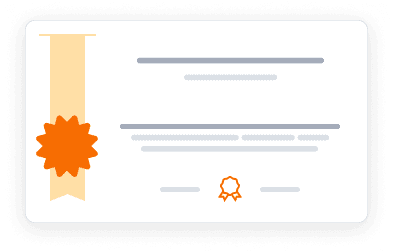Discover comprehensive statistical analysis techniques in Excel, from hypothesis testing to regression models and advanced variance analysis methods.
Discover comprehensive statistical analysis techniques in Excel, from hypothesis testing to regression models and advanced variance analysis methods.
This course is a continuation of "Statistics and Data Analysis with Excel, Part 1," diving deeper into applied statistics. Students will learn to perform hypothesis tests, create predictive regression models, and use ANOVA for comparing multiple samples. The course covers sampling distributions, one- and two-sample hypothesis tests, linear and multiple regression, and analysis of variance (ANOVA). All statistical techniques are taught using Microsoft Excel, leveraging its built-in functions and tools for statistical analysis. This course is designed for those with intermediate Excel skills and a basic statistics background.
Instructors:
English
What you'll learn
Perform one- and two-sample hypothesis tests on means and variances
Create and interpret linear and multiple regression models
Use ANOVA to compare means of multiple samples
Apply sampling distribution concepts in statistical inference
Utilize Excel's built-in statistical functions for advanced analysis
Interpret and communicate results of statistical tests
Skills you'll gain
This course includes:
3 Hours PreRecorded video
20 quizzes
Access on Mobile, Tablet, Desktop
FullTime access
Shareable certificate
Closed caption
Get a Completion Certificate
Share your certificate with prospective employers and your professional network on LinkedIn.
Created by
Provided by

Top companies offer this course to their employees
Top companies provide this course to enhance their employees' skills, ensuring they excel in handling complex projects and drive organizational success.





There are 7 modules in this course
This course provides an in-depth exploration of advanced statistical techniques using Microsoft Excel. Students will learn about sampling distributions, hypothesis testing for one and two samples, linear and multiple regression, and analysis of variance (ANOVA). The curriculum covers practical applications of these techniques in data analysis and decision-making. Participants will gain hands-on experience using Excel's statistical functions and tools to perform complex analyses. The course emphasizes real-world applications and interpretation of statistical results.
Introduction and Review
Module 1 · 1 Hours to complete
Sampling Distributions and the Central Limit Theorem
Module 2 · 3 Hours to complete
One-Sample Hypothesis Tests
Module 3 · 3 Hours to complete
Two-Sample Hypothesis Tests
Module 4 · 3 Hours to complete
Linear Regression
Module 5 · 3 Hours to complete
Multilinear Regression
Module 6 · 3 Hours to complete
ANOVA
Module 7 · 3 Hours to complete
Fee Structure
Instructor
Dedicated Educator in Chemical and Biological Engineering
Charlie Nuttelman earned his B.S., M.S., and Ph.D. degrees from the Department of Chemical and Biological Engineering in 1999, 2001, and 2005, respectively. He has been an instructor in the department since 2007, teaching a total of 18 different chemical and biological engineering courses that have accumulated over 20,000 student credit hours. These courses range from introductory engineering classes to advanced senior design projects, accommodating class sizes from small lab groups to large lectures with over 400 students. Among all his courses, introductory computing is his favorite, which he has taught more than 20 times. He enjoys the creativity and open-ended nature of the problems presented in this course, particularly for students who are new to programming and engineering problem-solving. Currently, Bruce teaches seven different courses on Coursera, with two more scheduled for release by the end of 2024.
Testimonials
Testimonials and success stories are a testament to the quality of this program and its impact on your career and learning journey. Be the first to help others make an informed decision by sharing your review of the course.
Frequently asked questions
Below are some of the most commonly asked questions about this course. We aim to provide clear and concise answers to help you better understand the course content, structure, and any other relevant information. If you have any additional questions or if your question is not listed here, please don't hesitate to reach out to our support team for further assistance.



